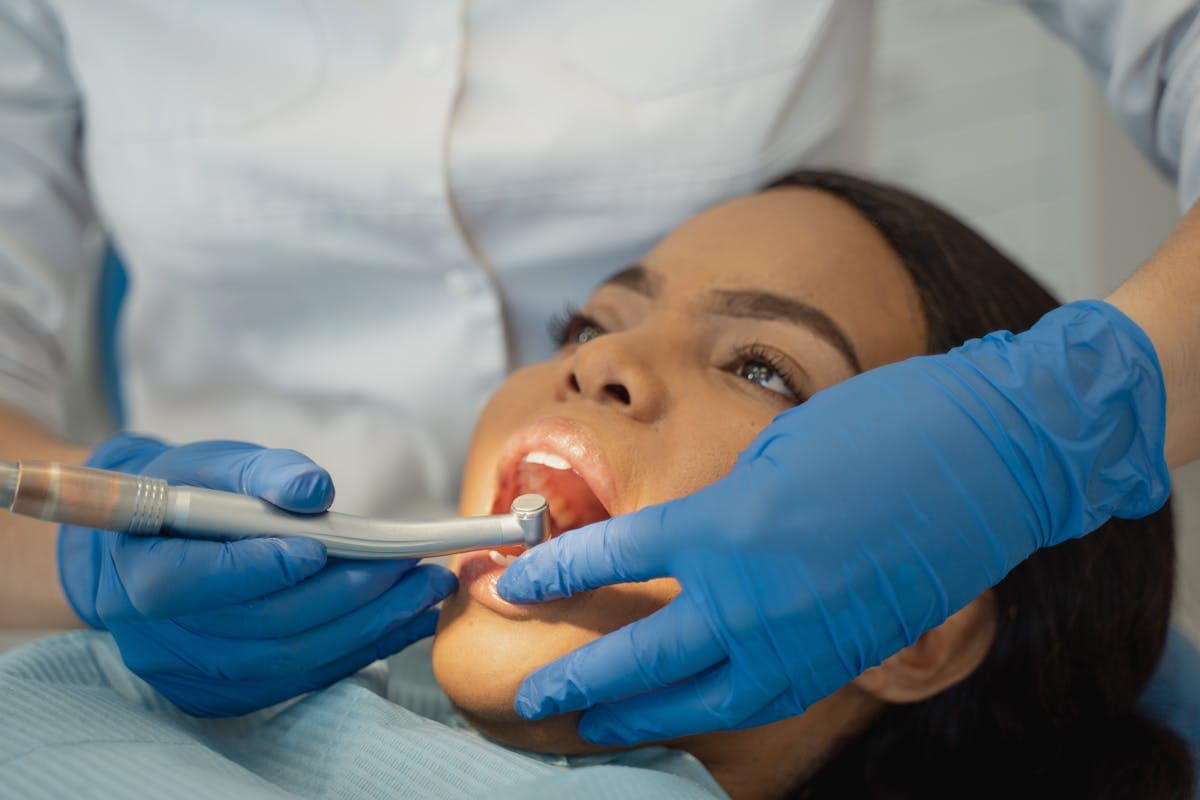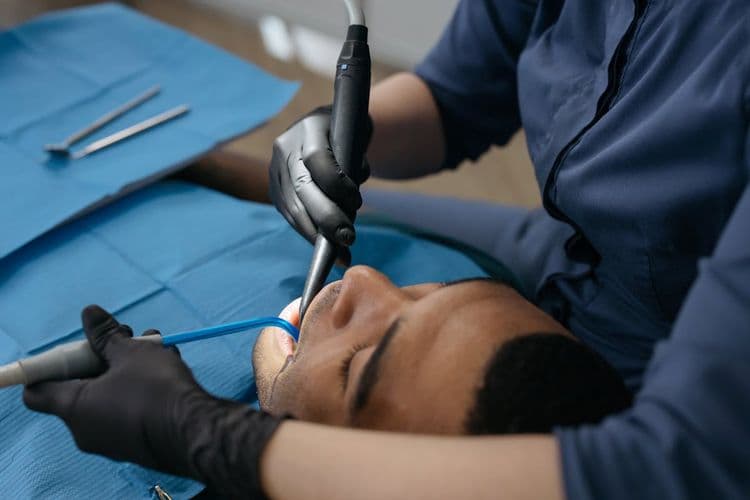In the domain of dental restoration, implant-supported procedures have emerged as an indispensable solution for tooth loss. These restorations, anchored into the jawbone with biocompatible materials, have proven to be effective regarding function, aesthetics, and patient comfort. However, their success hinges on appropriate care and maintenance post-surgery. With such potential, one might question: what exactly makes this option preferable over traditional dentures? And, what are the vital factors to evaluate concerning potential risks and post-operative care? It is these intriguing aspects that warrant a deeper exploration into the subject.
Understanding Implant Supported Restoration
Implant supported restoration, a revolutionary advance in the field of dentistry, is a concept that demands thorough understanding. This method utilizes various implant types, each designed to replace missing teeth and provide a sturdy, long-lasting foundation for the restoration materials.
Endosteal, subperiosteal, and zygomatic implants are the principal types, each with its unique advantages and applications. Endosteal implants, for instance, are commonly used due to their high success rate and versatility.
Restoration materials, on the other hand, are selected based on the patient’s specific needs and aesthetic preferences. They typically consist of porcelain, zirconia, or composite resins, known for their durability and natural appearance. Consequently, understanding these two key components—implant types and restoration materials— is integral to appreciating the benefits of implant supported restoration.
The Procedure Overview
The Procedure Overview serves as an essential juncture in our exploration of Implant Supported Restoration. This section will meticulously outline the process, providing a thorough comprehension of each step involved in the procedure. We will also provide post-procedure care tips, ensuring an ideal healing process and longevity of the implant.
Understanding the Process
While the procedure of implant supported restoration may seem intimidating, it fundamentally involves a series of well-defined steps. The process begins with the surgical placement of the implant into the jawbone. This is followed by a healing period, which allows for osseointegration, the process where the bone grows around the implant to secure it in place. This stage is vital for implant longevity. Various restoration techniques are then used to attach the replacement tooth or teeth to the implants. These techniques are dependent on the specific needs of the patient, the type of implant, and the type of restoration. The final step is the placement of the prosthetic component. Understanding each step can help alleviate any apprehension and guarantee a successful outcome.
Post-Procedure Care Tips
After thoroughly understanding the implant supported restoration process, it’s equally important to gain knowledge about post-procedure care. Ensuring proper oral hygiene is paramount following the procedure. Incorporating a daily routine of brushing and flossing can markedly reduce the risk of infection and enhance the longevity of the implant.
Additionally, diet considerations play an essential role in the healing process. Patients are advised to eat soft, nutritious foods and avoid hard, sticky items that could potentially harm the implant. Hydrating frequently can also aid in the recovery process.
Regular follow-up visits with your dental professional are recommended to monitor the implant site’s progress. Remember, post-procedure care is an integral part of achieving a successful implant supported restoration.
Key Benefits of This Technique
As we explore the concept of implant supported restoration, it becomes apparent that this technique boasts several key benefits. Primarily, its cost-effectiveness stands out. This method, while requiring an initial investment, can result in significant savings over time due to its longevity and reduced need for replacement or repair compared to traditional dental prosthetics.
In addition to its economic advantages, implant supported restoration also offers improved aesthetics. The implants, designed to mimic natural teeth, blend seamlessly with existing dentition, providing a visually pleasing and harmonious smile. This leads to enhanced confidence and overall patient satisfaction.
Thus, implant supported restoration is a valuable technique, combining financial prudence with aesthetic excellence to offer a superior dental solution.
Ideal Candidates for the Restoration
Identifying the ideal candidates for implant supported restoration is a multi-faceted process. It is vital to discuss the health prerequisites and other specific requirements that potential candidates must meet. This will be followed by a detailed examination of the preparatory measures that candidates must undergo before proceeding with this restorative procedure.
Determining Restoration Candidacy
Who, then, are the ideal candidates for implant supported restoration? The determination of candidacy is a critical step in any restoration evaluation. This involves a thorough patient consultation to assess their dental needs and overall oral health. Ideal candidates typically possess one or more missing teeth, sufficient bone density in the jaw to support the implant, and a commitment to maintaining excellent oral hygiene. They should also have a desire for a long-term solution as dental implants are designed to last for many years. It is also pivotal that the candidate is in overall good health to minimise the risk of any complications. Patient’s willingness to commit to regular dental check-ups post-procedure is also a key factor in determining candidacy.
Health Requirements for Candidates
While the determination of a patient’s candidacy for implant supported restoration hinges on a variety of factors, one of the most important is their overall health status. This is because certain health conditions can adversely impact the success rate of the procedure.
During the candidate evaluation, the following aspects play a significant role:
- General Health: The individual should be in good systemic health, free from conditions that impair healing or increase the risk of infection.
- Oral Health: The mouth should be free from periodontal disease, decay, or other issues that could jeopardize the success of the implant.
- Bone Health: There must be sufficient bone volume and density to support the implant.
- Lifestyle: Habits such as smoking or excessive alcohol consumption, which can hinder healing and integration of the implant, should be discontinued.
Preparatory Steps for Candidates
Following a thorough health assessment and confirmation of the patient’s candidacy for implant supported restoration, certain preparatory steps are warranted. These steps begin with a meticulous pre-surgery assessment to guarantee ideal treatment outcomes. This includes a detailed dental examination, updated dental radiographs, and possibly CBCT scans for precise implant planning.
In the candidate evaluation phase, it is essential to assess bone density and volume, as these directly influence implant stability and success. Additionally, oral hygiene practices are evaluated, and instructions are provided to improve preoperative oral health. Smoking cessation is strongly advised due to its negative impact on implant success. Finally, the patient’s medical history is reviewed in detail, and any systemic conditions are managed to reduce potential complications.

Comparing Traditional Dentures and Implants
Have you ever wondered about the key differences between traditional dentures and dental implants? Both can be effective solutions for missing teeth, but they offer distinctive features. - Denture Comfort: Traditional dentures, being removable, may cause discomfort due to their movement and instability. Proper fitting and regular adjustments can mitigate these issues. - Implant Longevity: Dental implants, fused to the jawbone, provide long-term durability. They can last a lifetime with proper care. - Maintenance: Dentures require nightly removal and cleaning, whereas implants mimic natural teeth and can be cleaned similarly. - Cost: Generally, dentures are less expensive upfront, but implants might be more cost-effective in the long run due to their longevity and lower maintenance needs.
Post-Surgery Care and Maintenance
Ensuring ideal healing and longevity of dental implants requires dedicated post-surgery care and routine maintenance. Paramount to this process is post-surgery hygiene, which involves regular brushing, flossing, and use of antibacterial mouthwash to prevent infection. Equally important is the appropriate management of post-operative pain. Over-the-counter analgesics can be used, but in cases of severe discomfort, prescribed medication may be necessary. Regular follow-ups with the dental professional are essential for monitoring progress and addressing any concerns promptly. Additionally, patients should avoid strenuous physical activity during the initial healing period to prevent complications. The diligent practice of these care measures greatly enhances the success rate and durability of implant supported restorations.
Potential Risks and Complications
Despite the high success rates, potential risks and complications may arise from implant supported restorations, which must be considered during the decision-making process. While the technology and techniques have been refined over time, certain challenges remain.
- Infection risks: Inadequate oral hygiene can lead to infections around the implant site, potentially causing implant failure.
- Implant failure: This can occur due to factors like improper placement, poor bone quality or overloading forces.
- Nerve damage: Although rare, this can lead to pain, numbness or tingling in natural teeth, gums, lips or chin.
- Sinus problems: These may occur when dental implants placed in the upper jaw protrude into one’s sinus cavities.
It’s essential to discuss these risks with your dental professional before starting implant supported restorations.
Success Stories and Testimonials
While acknowledging the potential risks and complications of implant supported restations, it is equally important to highlight the numerous success stories and positive testimonials from individuals who have undergone these procedures. Patient experiences often reflect the quality of these restorations, with many reporting improved functionality and aesthetics. These success outcomes underscore the transformative impact of these treatments. For instance, patients often report increased self-confidence after the restoration of their smiles. The success stories are not merely about aesthetics, but also about restoring an individual’s ability to eat and speak comfortably. Furthermore, with proper care and maintenance, these restorations can offer long-term reliability and satisfaction, marking them as a successful venture in dental advancements.
Frequently Asked Questions
What Is the Average Cost of Implant Supported Restorations?
The average cost is variable, influenced by several cost factors including materials, complexity, and location. Typically, the price range can span from $3,000 to $30,000, but it’s recommended to seek personalized estimates for accuracy.
Is the Procedure Covered by Dental Insurance?
Coverage options for procedures vary widely among dental insurance policies. It’s crucial to consult with your insurance provider to understand if and to what extent they cover the specific procedure in question.
How Long Does the Entire Implant Supported Restoration Process Take?
The duration of the entire process can vary considerably, often taking several months. This includes healing time post-surgery and is contingent on individual patient experience, such as overall health and the speed of their recovery.
What Materials Are Used in Implant Supported Restorations?
Various materials are utilized in restorative procedures, primarily titanium for the implants due to its biocompatibility and strength, and ceramic for crowns, favored for its natural appearance and durability against wear and tear.
Can This Procedure Be Done on Patients With Underlying Health Conditions?
Whether a procedure can be performed depends on the specific health conditions and their severity. Patient eligibility is determined on a case-by-case basis, considering overall health status, risk factors, and the potential benefits of the procedure.


